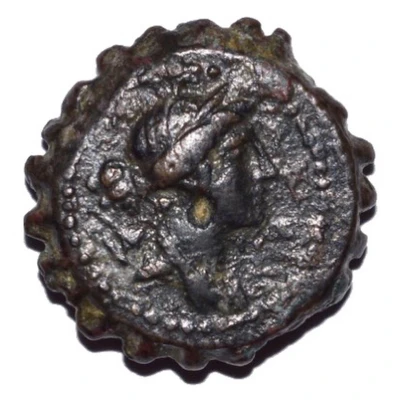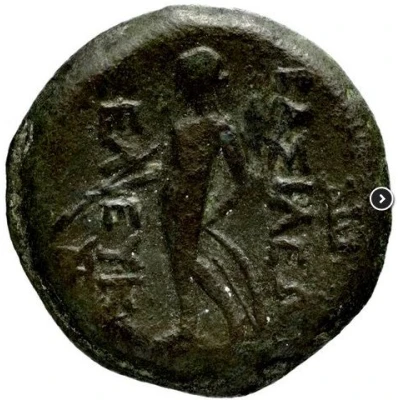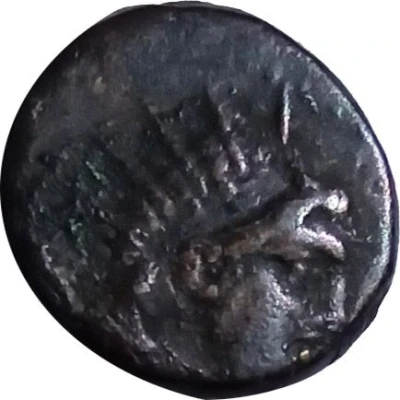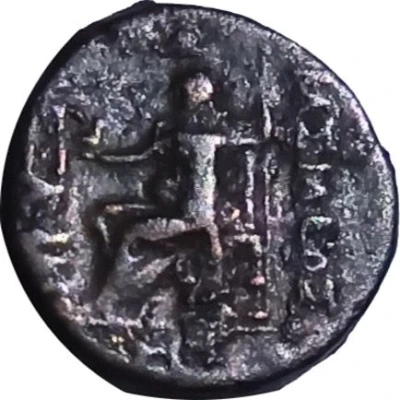


© Cuthwellis
Trichalkon - Demetrius Antioch 165 BC - 150 BC
| Bronze | 8.45 g | 20 mm |
| Issuer | Seleucid Empire (Seleucid Empire (305 BC - 64 BC)) |
|---|---|
| King | Demetrios I Soter (161 BC - 150 BC) |
| Type | Standard circulation coin |
| Years | 165 BC - 150 BC |
| Value | Trichalkon (1⁄16) |
| Currency | Drachm |
| Composition | Bronze |
| Weight | 8.45 g |
| Diameter | 20 mm |
| Shape | Round (irregular, Serrate) |
| Technique | Hammered |
| Orientation | Variable alignment ↺ |
| Demonetized | Yes |
| Updated | 2024-10-10 |
| Numista | N#170266 |
|---|---|
| Rarity index | 83% |
Reverse
Bow and quiver.
Script: Greek
Lettering: BAΣIΛEΩΣ ΔHMHTΡIOY
Translation: King Demetrios (I, Soter)
Edge
Serrated
Interesting fact
One interesting fact about this coin is that it features a unique blend of Greek and Persian design elements. The obverse side of the coin depicts the Greek goddess Athena, while the reverse side features a Persian king, likely Demetrius I, in a traditional Persian crown and robes. This fusion of cultural styles reflects the multicultural nature of the Seleucid Empire, which was founded by a Greek general but ruled over a vast territory that included much of the ancient Near East.



